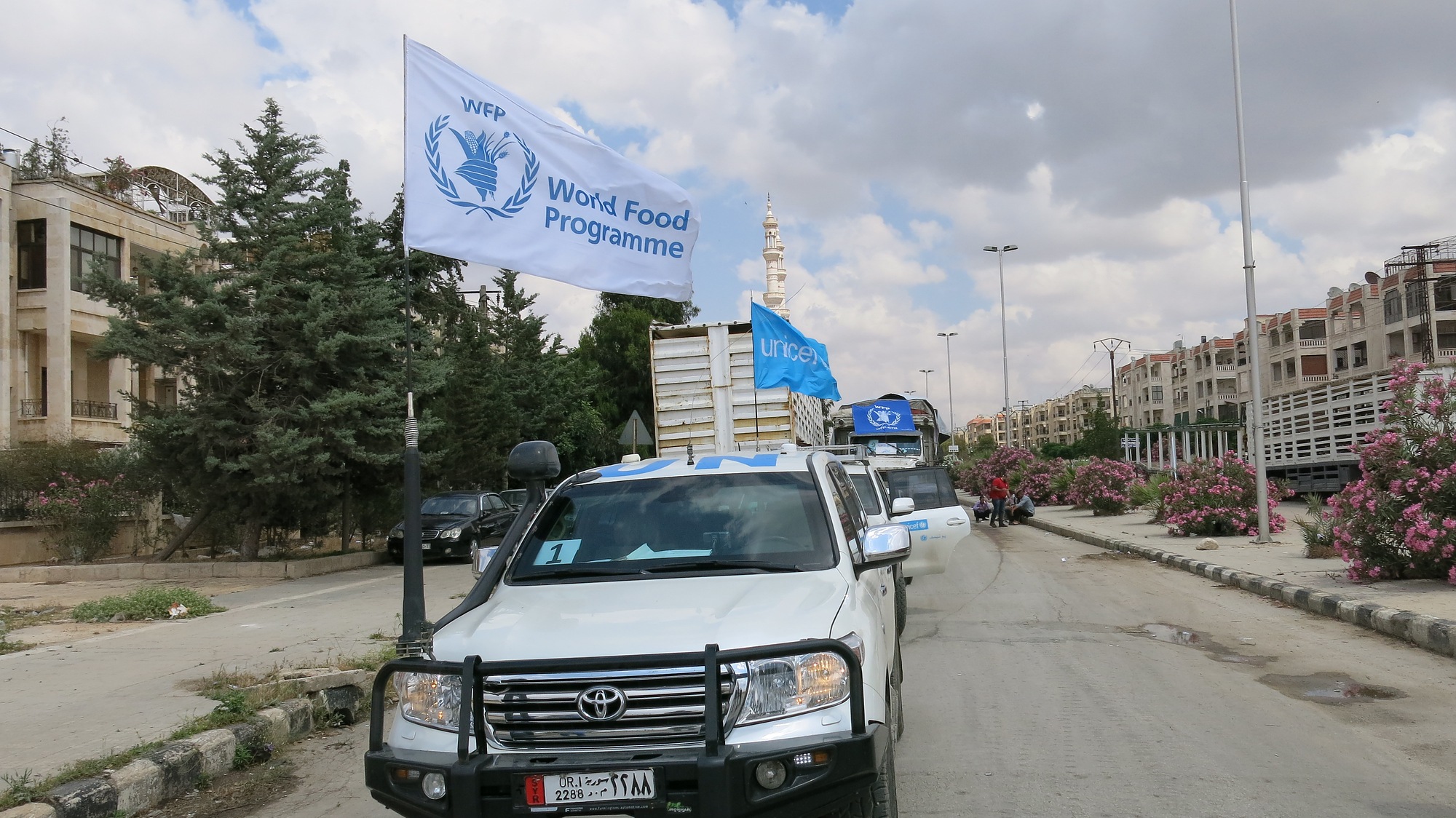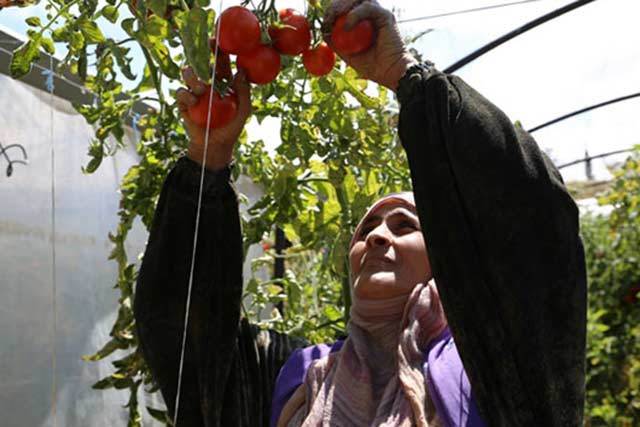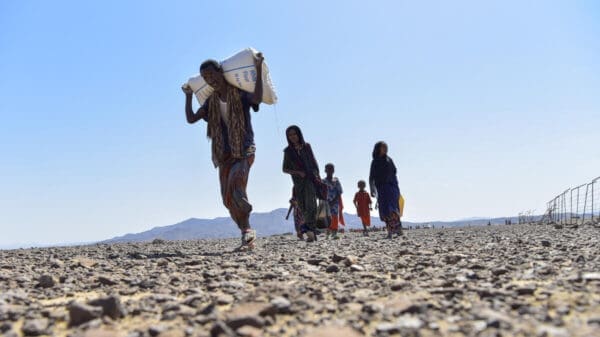
Syria
Recovering from an Earthquake
A massive earthquake in neighboring Türkiye left thousands of people without food or shelter. Syria now faces a crisis on top of a crisis.
A Hunger and Refugee Crisis
The 7.8 magnitude earthquake that hit Syria in February came during one of the hardest years ever for Syrians. Violent conflict and sky-high food prices have already pushed families to their absolute limit: Nearly 70% of the population depends on some form of humanitarian assistance.
Since violence first erupted in 2011, the crisis has become one of the most complicated operations for the U.N. World Food Programme. More than 6 million Syrians are displaced inside the country and another 5.5 million are registered as refugees in nearby countries like Türkiye.
people are severely hungry in Syria
Increase in food prices in December 2022 alone
people who depend on aid are women and children
12 Years of War

Feb 6, 2023
A 7.8 magnitude earthquake hits northwest Syria where 4.1 million people survive almost entirely on humanitarian aid. The region is largely inaccessible due to destroyed infrastructure and harsh winter weather. WFP is delivering hot and ready-to-eat meals to families affected by the earthquake.
Photo: WFP/2023
Mar 2022
After 11 years of conflict, Syrian families are being forced to choose between buying food, fuel or medicine. Basic meals were already beyond their reach when war erupted in Ukraine, triggering a collateral wave of hunger and driving up food prices. Despite the challenges, WFP distributes lifesaving food to 5.6 million people every month. This assistance includes 1.3 million people in the northwest via the cross-border operation from Turkey.
Photo: WFP/Hussam Al Saleh
Mar 2021
After a decade of conflict, the situation is the worst it’s ever been. 12.4 million Syrians are hungry, and 6.7 million people are displaced within their country’s borders. With the number of COVID-19 cases and food prices rising, families are struggling to survive each day. In January, WFP reached nearly 5 million people with lifesaving food, and ramped up support for vulnerable mothers and children.
Photo: WFP/Abeer Etefa
Dec 2019
Escalating levels of conflict displaced nearly one million people across Northwest Syria starting in early December. It was the largest wave of displacement in nearly nine years of conflict. More than 80 percent of the displaced were women and children. In February, WFP scaled up its work in the area to reach 626,000 people with monthly food rations and another 487,000 newly displaced people with ready-to-eat rations that can feed a family of five for one week.

Oct 2017
The fall of Raqqa and the departure of ISIS.
Photo: WFP/Hussam Al Saleh
Apr 1, 2017
The United States launches a military strike on a Syrian government airbase in response to a second chemical weapon attack on civilians.

Dec 1, 2016
The fall of Aleppo after hundreds of government airstrikes leaves the city of roughly 4.6 million people in ruins.

Mar 1, 2011
The Arab Spring protests erupt and the Syrian civil war begins, pitting the Assad government against the rebels.
Photo: OCHA/Josephine Guerrero







You Can Help Save Lives
Millions of Syrians are displaced – first from conflict and now by natural disaster. Your generous donation can help deliver critical food aid.
The Syrian Refugee Crisis in Jordan
Over 650,000 Syrians – that’s more than the entire population of Memphis, Tennessee – have registered with UNHCR in Jordan. Almost 90% of them are either hungry or teetering on the edge of food insecurity.
How WFP Is Supporting Syrians
The United Nations World Food Programme works to reach Syria’s most vulnerable families with the food, nutrition and cash-based assistance they need.

Each month WFP does whatever it takes to reach over 5 million people with lifesaving food. This is WFP’s largest program in Syria and provides families with foods like rice, beans, oil and wheat to prevent them from slipping further into hunger. In 2016, WFP airlifted emergency food rations into Qamishly city for the most vulnerable groups including orphans, female headed households and widows.


WFP’s nutrition program helps kids to get the best possible start in life and supports pregnant and nursing mothers to fight and prevent malnutrition. WFP currently provides pregnant and nursing women and kids under the age of 2 with access to nutrient-rich foods. Women are provided with cash and vouchers to diversify their diets, improve vitamin and mineral intake, and meet their nutritional needs.


Cash assistance from WFP empowers families with the purchasing power to buy the nutritious foods they need at stores close to their homes. In Aleppo, WFP provides cash aid through e-cards to the families of children who have missed out on years of school due to conflict and displacement. E-cards are redeemable at local shops for fresh food and serve as an incentive for students to stay in the classroom.

Fighting Hunger With Innovation

Cash, vouchers and e-cards can be lost, stolen, or forged, putting recipients at risk. This technology allows Syrian refugees to safely purchase food from camp supermarkets using a scan of their eye instead.


WFP’s trucks reach hungry families in need, carrying more than 1 million pounds of lifesaving food. The trucks carry large bags of food, nutritional supplements and other supplies to hard-to-reach communities.


Bread is a staple food and a powerful cultural symbol in Syria. When bakeries inside eastern Aleppo were destroyed in conflict, WFP provided bundles of bread to nearly 12,000 displaced people.


Greenhouses are being rebuilt and farmers have been provided with tomato seeds and irrigation kits, as well as with food rations to get through the lean season before their tomato harvests are complete.

Help Us Save LIves
People in Syria and neighboring countries are suffering from recurring natural disasters and years of conflict. You can help save lives by donating today.
News & Updates from Syria
Read the latest articles on hunger issues and WFP’s work in Syria.





